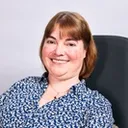
Categories
Curriculum planning
20 October 2022Our approach to EYFS

Katie Marl
Primary Curriculum Design Lead
We’ve recently made changes to the way we present our EYFS reception lessons to make it clear where they map to the EYFS framework.
We created our EYFS reception lesson resources at the start of the pandemic in 2020, when early years settings were closed and children were at home. Our intention was to give parents tools and resources they could use to support their child’s learning and development.
We made decisions about the content of these lessons and how we presented them to make them accessible for parents. For example, we used terms to categorise the lessons that would be easily understood by non-teachers.
Our EYFS lessons are now mostly used by teachers as inspiration for their teaching, and they’ve rightly given us feedback on the way our content is presented. We didn’t present this in line with the EYFS framework and now, with the worst of the pandemic hopefully behind us, it’s right that we change our language so that we do. We therefore no longer refer to ‘subjects’ and instead use ‘areas of learning’. We have renamed 'music’ to ‘expressive arts and design’, and ‘RSHE (PSHE)’ is now called ‘PSED’ (Personal, Social and Emotional Development).
Here we explain how we organise our EYFS curriculum and our approach within the lessons, and how you can use them to support your teaching.
How our reception curriculum is organised
There are seven areas of learning and development that shape educational programmes in early years settings. All seven areas are important and connections are made across them. For example, one task can engage a child in developing in multiple areas.
The three ‘prime areas’ are:
- communication and language
- physical development
- personal, social and emotional development
The four ‘specific areas’ are:
- literacy
- mathematics
- understanding the world
- expressive arts and design
We organise reception learning by the specific areas of literacy, maths, understanding the world, and expressive arts and design. We also include personal, social and emotional development (PSED) as this was a key area of need during the pandemic. We ensure that physical development, personal, social and emotional development and communication and language are developed across all these areas and are embedded throughout our lessons.
Our approach within lessons
Within each lesson, there is a short period of teaching that explicitly introduces key concepts and important vocabulary. There is then a modelled follow-up activity. This activity is intended as a suggestion for follow-up learning rather than a dictated task. The activity could be used for small group work, or as an option for pupils to engage with as part of continuous provision. The activities were designed with minimal resources in mind so they could be easily carried out in the home environment. Teachers may wish to introduce more resources during in-person teaching, or use a different activity entirely.
The role of the teacher
We know that in reception the development and embedding of learning is best facilitated through purposeful provision and play. Teachers are key to bringing learning to life in the early years setting.
Our EYFS video lessons can be used as a foundation for your lesson planning. They aim to teach key knowledge and skills and then help teachers to facilitate further activities which build upon this.
Search our EYFS lessons and start using them today.

